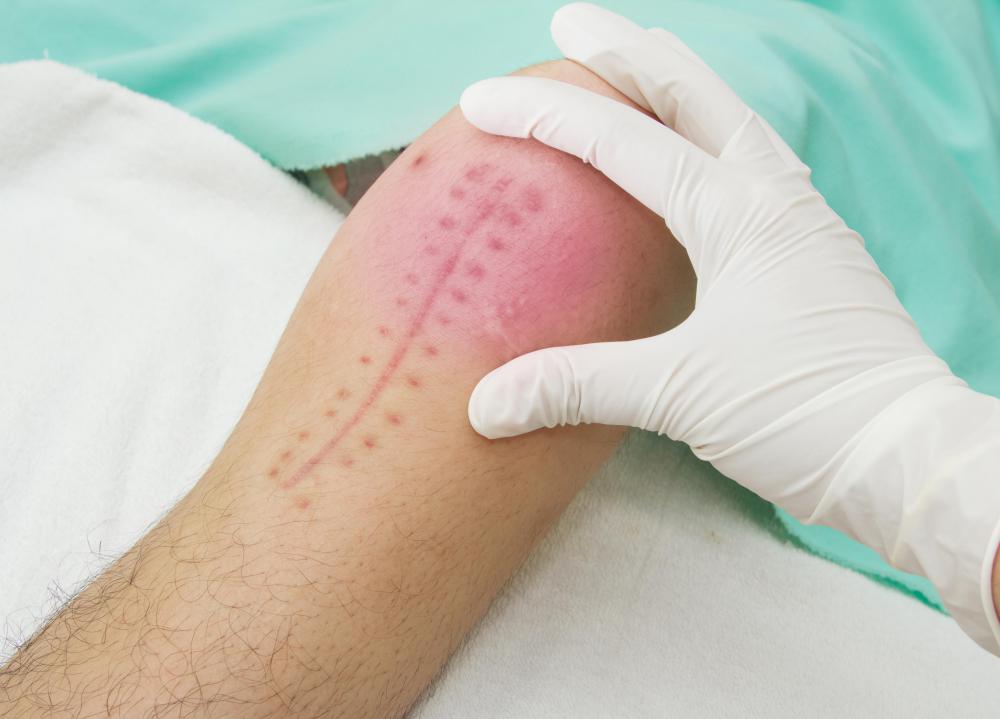At TheHealthBoard, we're committed to delivering accurate, trustworthy information. Our expert-authored content is rigorously fact-checked and sourced from credible authorities. Discover how we uphold the highest standards in providing you with reliable knowledge.
What Is a Dissolvable Suture?
A dissolvable suture is a form of wound closure used after surgery. Since the sutures are absorbed by the body, they can be used on internal or external wounds, making them a good choice for oral surgery and surgical procedures on internal organs. The sutures are made from natural materials, rather than synthetic ones that cause the body to view the suture as a foreign substance and try to get rid of it. The most common materials used to make a dissolvable suture are polyglactin and polyglycolic acid.
The body's natural enzymes and fluids work to dissolve the suture internally. Dissolvable sutures are not often used on superficial flesh wounds because the surface of the skin do not receive enough blood and fluids to dissolve the stitches naturally in most cases. Most dissolvable stitches take several weeks to begin dissolving and they may last for several months before they are entirely gone. How long the stitches take to dissolve depends on how many there are, how deep the wound is, and the stitch material. Polyglycolic acid stitches dissolve more quickly and completely than polyglactin stitches do.

Closing a wound with one dissolvable suture or several is desirable because the patient does not need a follow-up visit with the doctor or surgeon to remove the stitches. The sutures are made in various strengths to allow the body to absorb them rapidly or slowly, depending on how much time is needed to heal the wound. In some cases, a dissolvable suture does not completely go away. If this happens, a doctor can easily remove the suture after the wound is completely closed and healed.

It is important for patients to follow their doctors' directions regarding wound care after an injury or surgery. Dissolvable sutures sometimes protrude out of the skin, but picking or pulling at them can slow wound healing, result in more severe scarring, and make the wound more susceptible to infection. The area should be kept clean and stitches should be allowed to fall out or dissolve on their own.

As with any type of wound, areas closed with dissolvable stitches can become infected. Since many wounds closed with these types of sutures are inside the body, patients may not be able to see external signs of infection, such as redness, pus, or swelling. It's important for patients to see their doctors if they develop a fever or severe discomfort near the wound site following surgery, as these can be signs of a serious infection or an indication that the body is rejecting the stitches.
AS FEATURED ON:
AS FEATURED ON:

















Discuss this Article
Post your comments